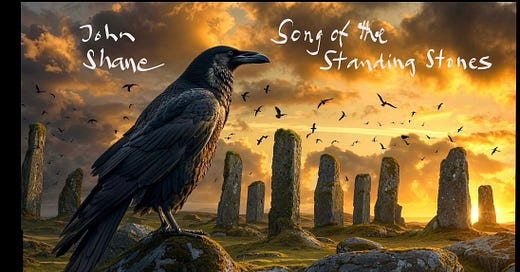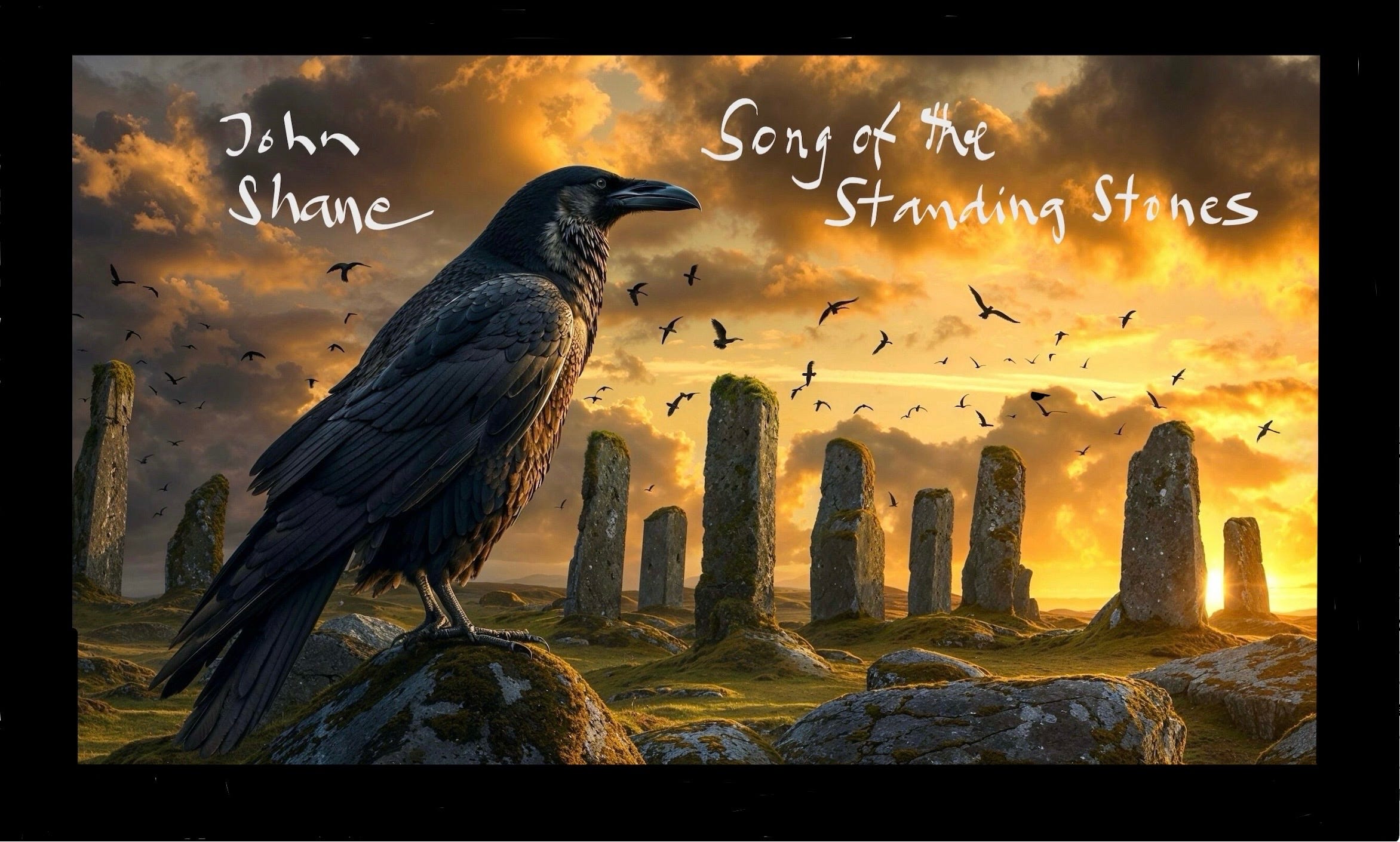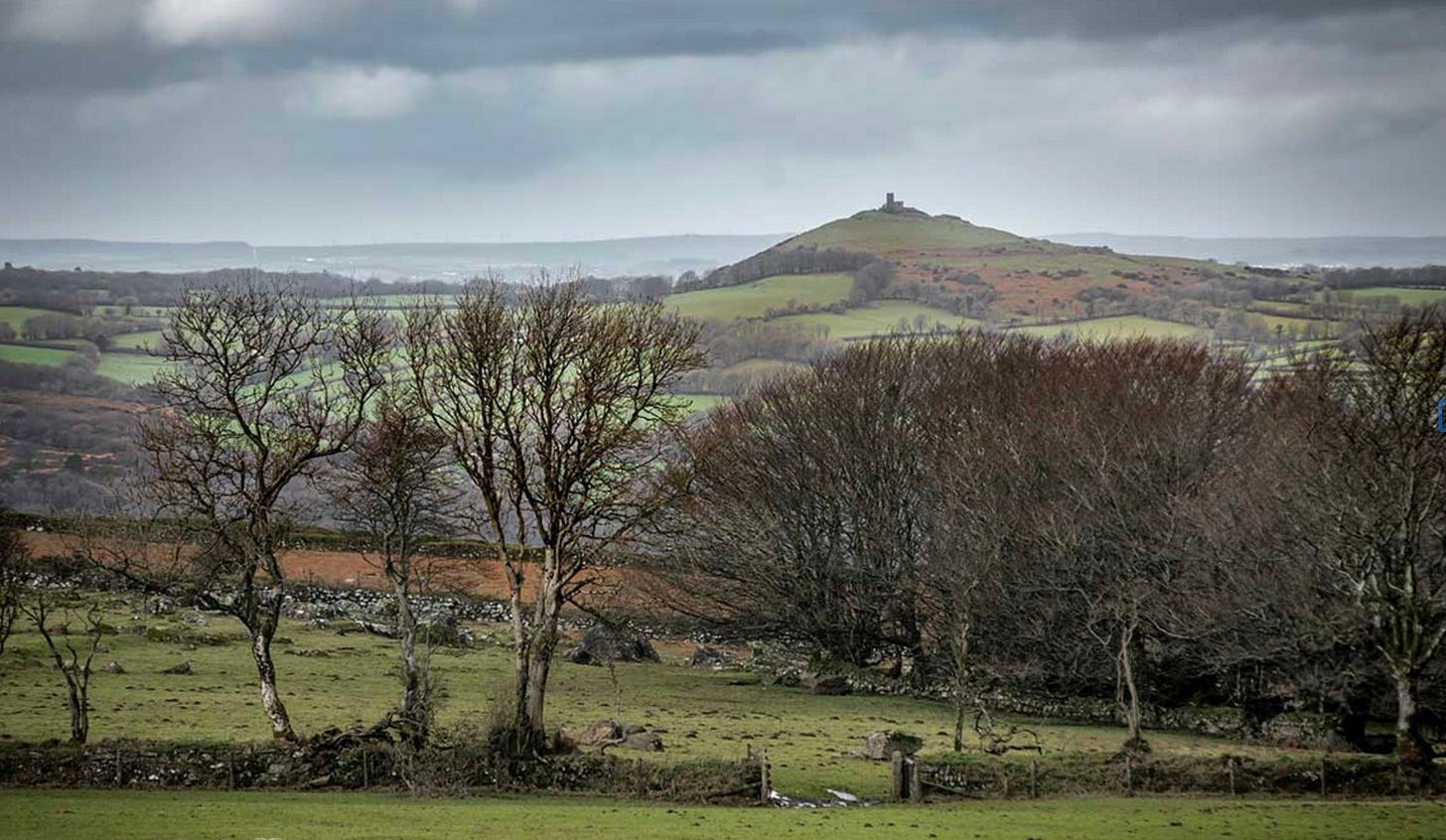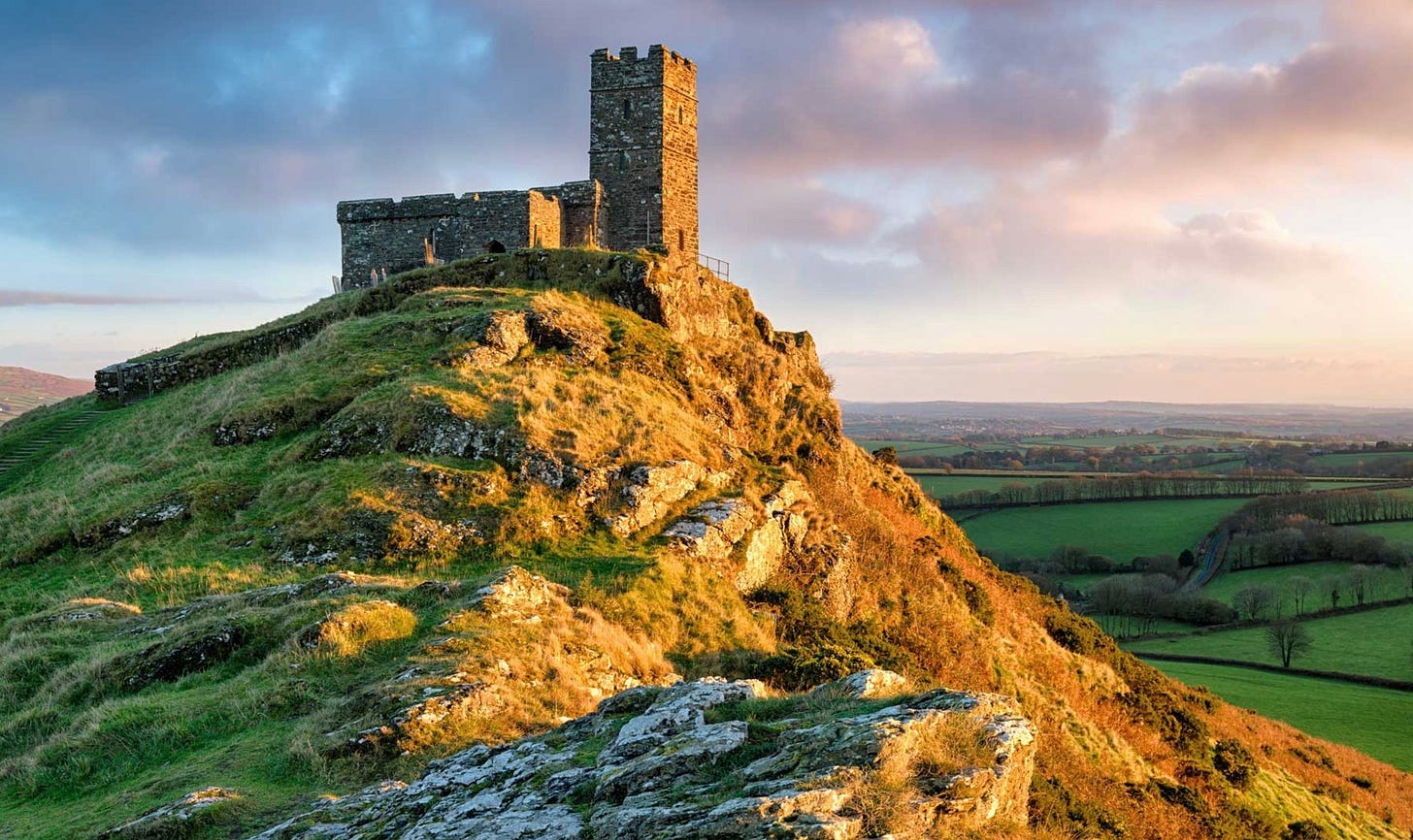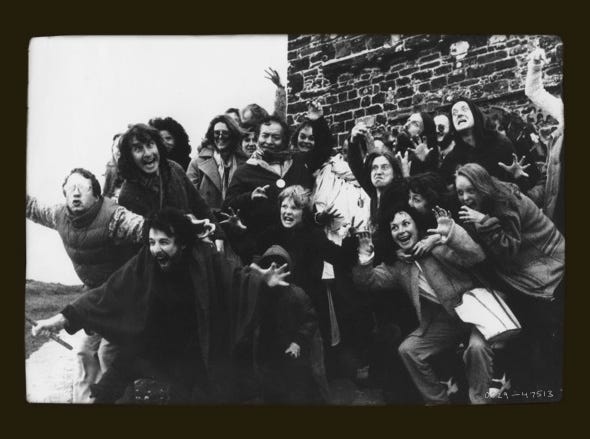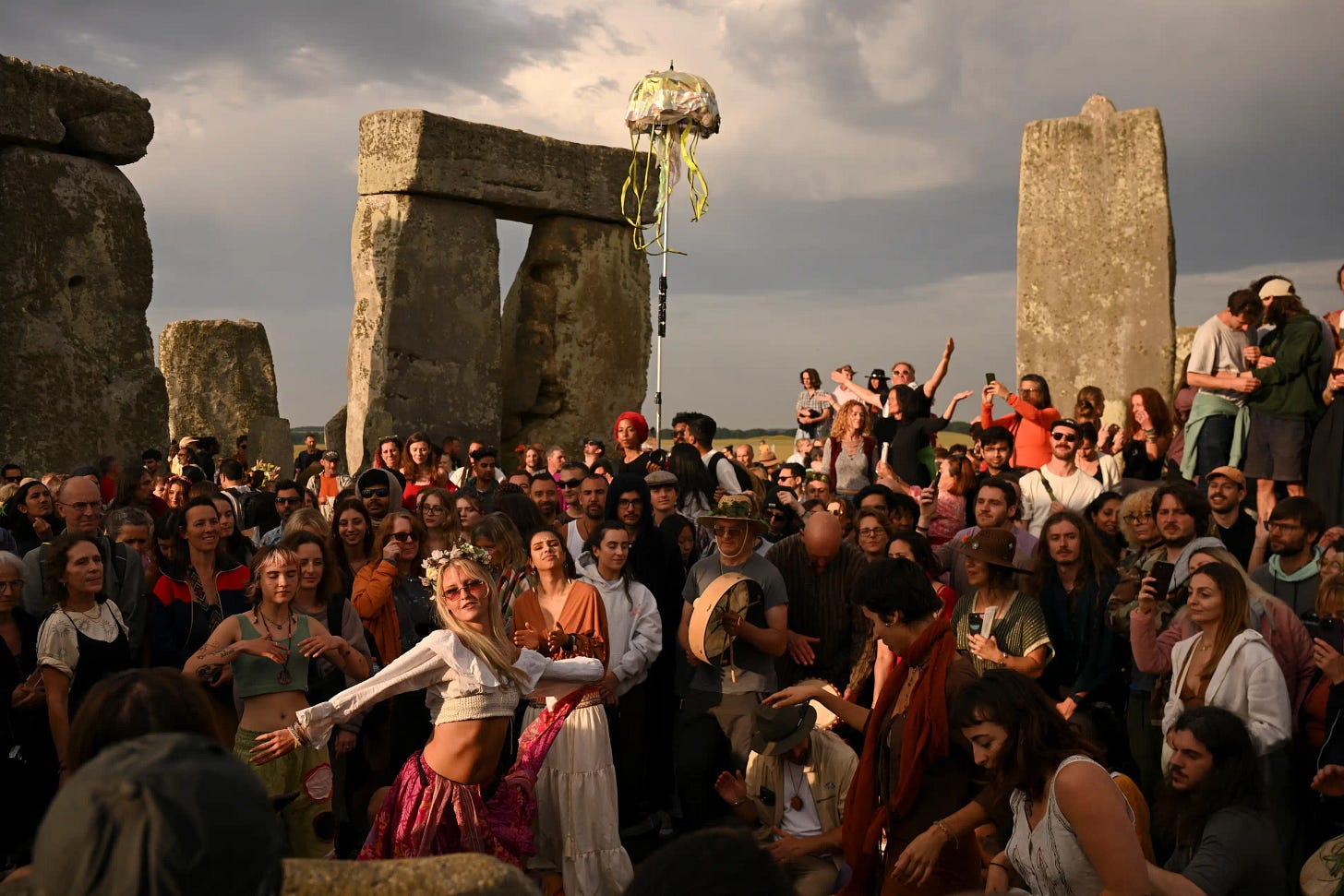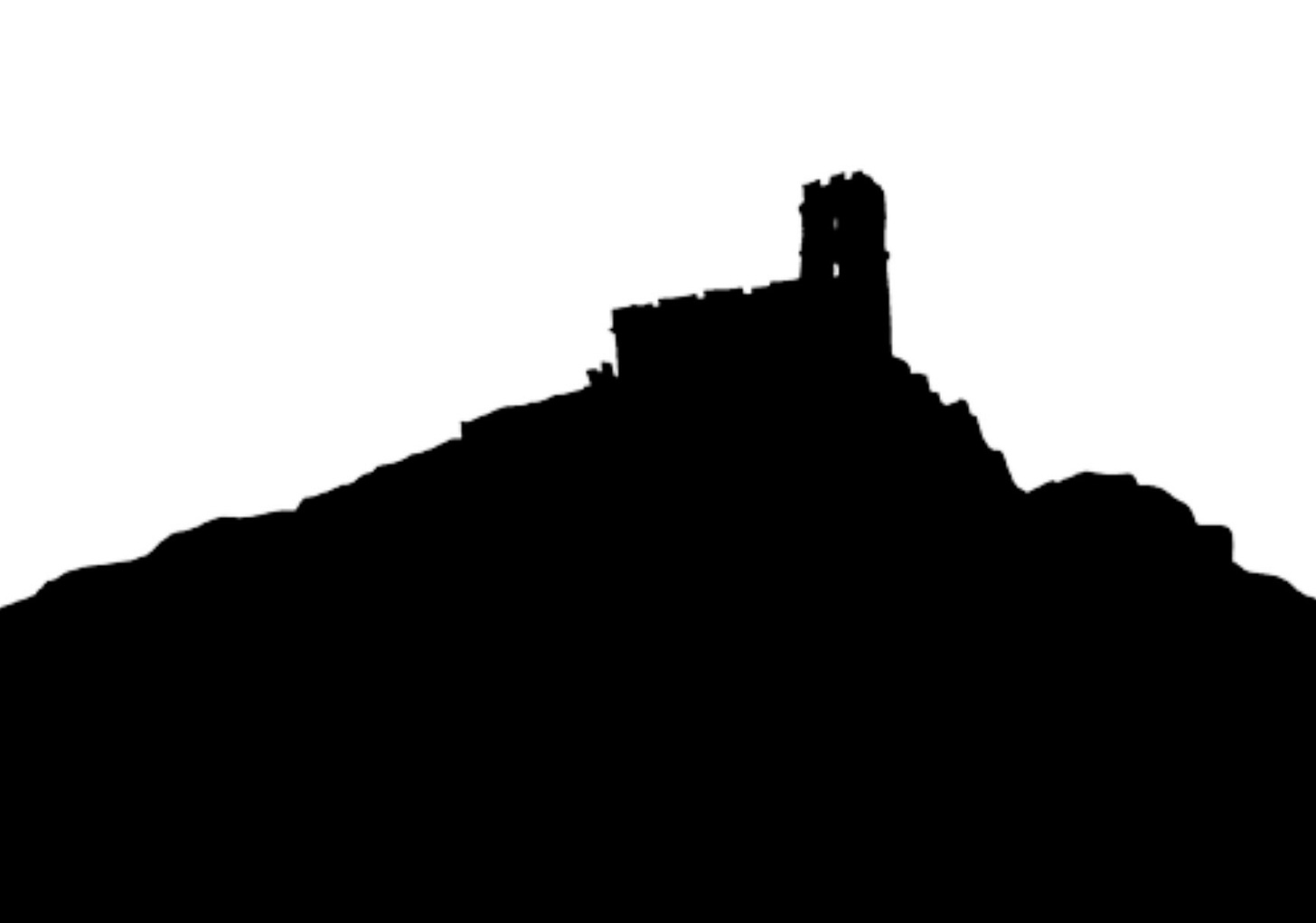SONG OF THE STANDING STONES (Wake The Dead) by John Shane, and the story of integrating with local guardians at Brent Tor, a sacred site on Dartmoor in the UK with Chogyal Namkhai Norbu Norbu in 1981
JUST FOR FUN here’s a poem in the form of a traditional ballad to celebrate the Summer Solstice & the ancient sacred sites & spiritual poetic traditions of the British Isles where I was born & grew up
CLICK ON THE PLAY BUTTON ABOVE at the right hand side of the page to listen to John Shane read his poem…
Brent Tor, seen in the distance, across the fields of Dartmoor.
The Church of St Michel de Rupe (St Michael of the Rock) on top of Brent Tor.
Chogyal Namkhai Norbu can be seen at the centre of this photo that was taken in 1981 on Brent Tor, Dartmoor, United Kingdom. John Shane is at the front left of the photo.
Wherever I went as I traveled around the world with the late Dzogchen Master Chogyal Namkhai Norbu, he used to like to meet with practitioners of the local indigenous spiritual traditions and to visit places sacred to the ancient traditions of the country he was visiting.
During a Dzogchen teaching and practice retreat that he led at Grimstone Manor, Horrabridge, Yelverton, Devon, in 1981, for example, he drove a few miles to visit Brent Tor on Dartmoor, a place sacred to the ancient pre-Christian traditions of the British Isles, on top of which, as in so many other places, a Christian church had later been built.
At the centre of the photo above, Chogyal Namkhai Norbu (wearing a ‘Melong’ - a circular Tibetan mirror that is a symbol of the Dzogchen teachings that is made of five precious metals) can be seen surrounded by practitioners who were attending the retreat that he was leading who were all - at the moment the photo was taken - following Norbu Rinpoche’s instruction to manifest as if they were wrathful divinities
The instruction from Chogyal Namkhai Norbu was that we should each manifest in our mind in the form of a wrathful divinity and then, in that form, through the movement of our body and the sound of our voice integrate with the energy of the place by invoking the local guardians of the area to ensure that our presence in their domain would be in harmony with their influence at an energetic level.
Rinpoche engaged in this kind of practice, in different ways, wherever he went in the world.
My personal practice involved also writing about what I experienced during such moments, and the poem, in ballad form, included here - to celebrate the summer solstice - was written as a humorous ‘tongue in cheek’ celebration of the kind of experience I had while traveling around the United Kingdom with Norbu Rinpoche, during which time we visited a number of ancient sacred sites with standing stones.
John Shane manifesting as a wrathful Heruka on top of Brent Tor on Dartmoor in 1981.
A view of Stonehenge from the air.
SONG OF THE STANDING STONES
(Wake The Dead)
John Shane
I'd been drinking
in a favourite bar
with friends
both old and new
- it was getting late
the bar was closing
and I confess
I'd drunk a pint
or two
I stumbled out
into the night to walk up
to my home alone
but as I passed
through the high pasture
I thought I heard a voice
calling to me
from the circle
of the standing stones
'Wake the dead, wake the dead
rouse the sleeping from their beds
turn the whole world on its head
wake the dead, wake the dead
wake the dead'
Although the stars
were shining
there was no moon that night;
I had no torch upon my person
or other means to give me light.
And in that utter darkness
- even though I'd never
heard of such a thing -
it seemed to my disbelieving ears
as if the stones themselves
somehow began to sing
The voices that I heard
were so real to me
- so very sweet and pure -
that something
in the sound of them
at first made me feel quite secure
And since
in my heart and mind
I felt no trace of fear
I walked slowly into the circle
and to the central stone drew near
The sound of that strange singing
then seemed to fill my head
and in the place of the standing stones
I swear, I saw the forms of men and women
dancing there instead
They were dancing in a circle
dancing round and round
and as they danced their singing
grew all the while more loud
'Wake the dead, wake the dead
rouse the sleeping from their beds
turn the whole world on its head
wake the dead, wake the dead,
wake the dead'
I felt a sudden apprehension then,
that filled my heart with dread
but even though I covered up my ears
I couldn't stop the voices
that now seemed
to sing inside my head
My feet were moving restlessly
- I longed to join the dance -
but somehow I resisted
while I still had the chance
But then I could
resist no longer
there was nothing I could do,
and as my feet took to
dancing by themselves
I heard my own voice
start singing too
'Wake the dead, wake the dead
rouse the sleeping from their beds
turn the whole world on its head
wake the dead, wake the dead
wake the dead'
I danced for such a long time -
I think I must have danced
the whole night through -
all I know is that
when I finally awoke
I was lying on my back
in the meadow
with my face all wet with dew
The singing it had ceased
and the dancers they had gone:
all that remained of them
was the memory of their song
I feared no one would believe me
if I told all I'd seen and heard
so I went home to my bed that night
and ever since, I've never said a word
But now when I pass
the standing stones
on my way home
from the pub at night
I often pause there
in the light of the moon
to gaze upon that splendid sight
I've never again seen
those dancing figures
and perhaps I never will
but you can be sure
I'll never forget
the words they sang
- in fact they haunt me still
'Wake the dead, wake the dead
rouse the sleeping from their beds
turn the whole world on its head
wake the dead, wake the dead
wake the dead'
2025 Summer Solstice at Stonehenge - Saturday 21 Jun 2025
Thousands attend the annual festival at the prehistoric structure in Wiltshire to mark the longest day in the northern hemisphere. You can see more colorful photos on The Guardian newspaper website at the link below:
Just for fun here’s….
The Legend of Brentor Church
The giants were all dead and the witches had fled to Wales driven by the friends of Bowerman, but one evil genius still remained.
The Devil roamed the Moor looking for victims and terrifying the countryside.
Churches and wayside crosses were places of safety but the inhabitants of Dartmoor knew that the Devil only needed a slight mistake and he would pounce and carry off his victim.
One day a rich merchant ship was sighted making her way up the Channel bringing spices and silks from the East.
The Devil had been a long time without any victims, thanks to the vigilance and care of the moor people, so he at once decided to wreck the ship and destroy its merchandise.
That night he created a terrible storm.
The rain and wind extinguished the warning beacons on the coast and on the top of Brennon or Beacon Tor which we now call Brentor.
The night was pitch dark except when lit by terrible flashes of lightning.
The wind roared, driving the ship towards the rocky coast and the thunder roared threateningly.
All night the captain of the Virtue, for that was the name of the ship, battled to keep her afloat and away from the dreadful, jagged rocks while Hugh the Merchant stayed below decks praying.
The Devil had flown high above the ship where he was in complete control, laughing and shrieking with glee as the ship drove towards the rocks and certain death for the crew.
Towards morning Old Hugh came up on deck only to be informed that no mortal power could save them now.
On hearing this, Old Hugh at once knelt down on the heaving deck and prayed to his patron saint, Saint Michael.
He vowed that if the ship were saved he would build and dedicate a church to St Michael on the highest point of land he first sighted.
Almost at once the wind slackened and changed direction, taking the ship away from the shore.
The Devil, enraged, summoned up all his power but was no match for Saint Michael.
As soon as Hugh set foot ashore he set out to fulfil his vow by building a church on Brentor which was the first and highest point of land sighted after the storm.
It was a formidable task, as anyone will know who has visited Brentor, but the grateful merchant toiled away unsparingly giving freely of both money and energy until he had assembled all the required material on top of the steep tor.
Hugh breathed a sigh of relief, feeling that his task would soon be completed.
That very night, however, the Devil happened to pass over and, realising at once what was happening, felt very angry indeed and scattered the building materials round the foot of the tor chuckling all the while in devilish glee.
Hugh was shocked to see what had happened when he arrived the following morning, but nothing daunted, started all over again, carrying the stones back up to the top.
Each night the Devil scattered the materials and each morning Old Hugh carried them back up to the top of the tor.
After some weeks Saint Michael, realising what was happening and knowing that Old Hugh would need help before he could fulfil his vow, decided to intervene.
When the Devil arrived the next night he found Saint Michael waiting for him.
On seeing his old enemy, the good saint seized a huge granite boulder and hurled it at the Devil who had turned to run away.
The rock caught him on the heel and sent him off roaring with rage and pain.
Because of his injury, the Devil kept out of the way allowing Old Hugh to complete his task and the church was finally dedicated.
The church at Brentor is the smallest on the Moor because poor Hugh, in his long tussle with the Devil had wasted a lot of his money, however it still stands to this day, a tribute to Saint Michael and to the determination of Old Hugh the Merchant who built it.

